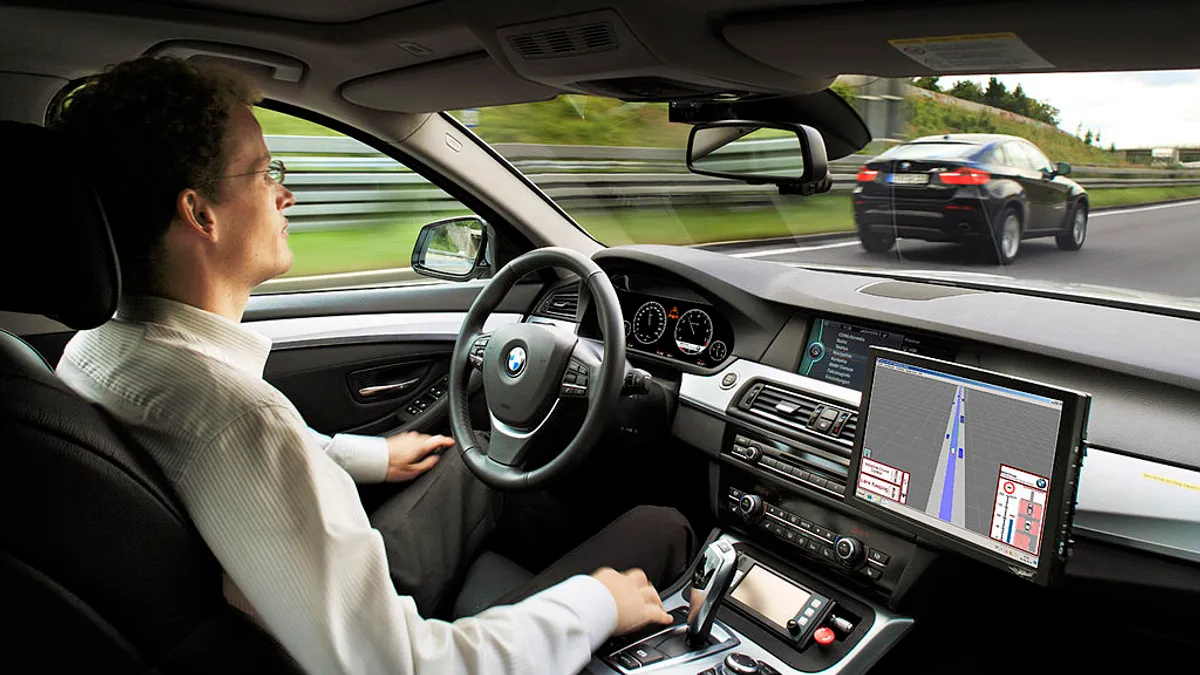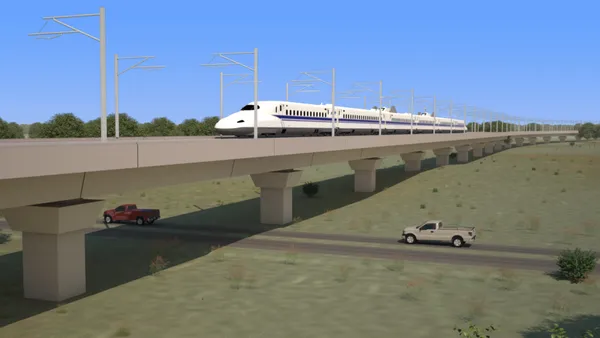Dive Brief:
- Drivers are overwhelmingly ready for self-driving vehicles, but want to maintain some level of control over the cars, according to a survey from SAE International released this week.
- The survey found 82% of respondents are enthusiastic about self-driving cars. More than three-quarters (76%) of respondents said a self-driving experience is similar or superior to a traditional human-driven experience, however 92% said they'd want the ability to control the vehicle if needed.
- The survey results were collected at self-driving car demonstrations that took place between November 2017 and April 2019 in four cities: Los Angeles, Detroit, Tampa and Babcock Ranch, FL.
Dive Insight:
Public sentiment toward autonomous vehicles (AVs) remains mixed across different surveys. While the SAE poll had large majority enthusiasm, other surveys have shown more trepidation, like an October survey from Adobe Analytics that found only 40% favored AV technology being available for sale. And a March AAA survey found that 71% of people are scared to ride in an AV.
The SAE survey, however, collected responses from people who were testing self-driving cars, which showed off Level 3 and Level 4 technology like a vehicle starting, stopping and accelerating. Enthusiasm climbed nearly 10% after respondents took a ride in the car, and many said they were familiar with features like lane assist or self-parking that made them more comfortable with the idea of a self-driving car. Only 6% of the 1400 survey respondents had been in a self-driving car before the demo days.
"What we’ve been finding is the biggest hurdle to adoption for consumers of automated vehicles is understanding and trusting the technology," Mary Moore, SAE’s strategic marketing director, told Smart Cities Dive. “What we found is that trust is beginning to improve, but its going to be driven by getting more trusted information into the marketplace.”
It's also telling that consumers still want some degree of control over the cars (only 36% said they would be comfortable with the car in control the whole time). That indicates consumers are still more interested in having self-driving features, like lane assist or cruise control, rather than a fully independent vehicle, at least while the technology is evolving.










